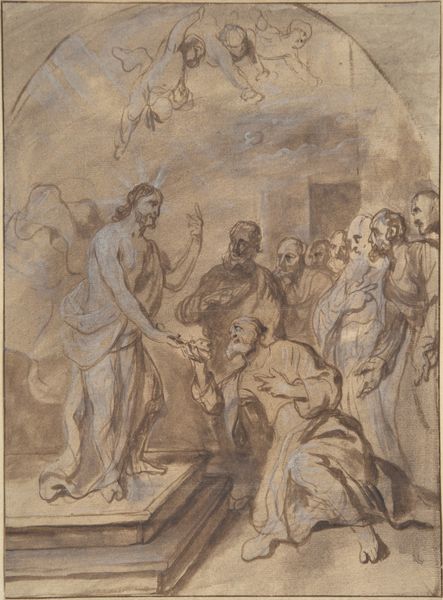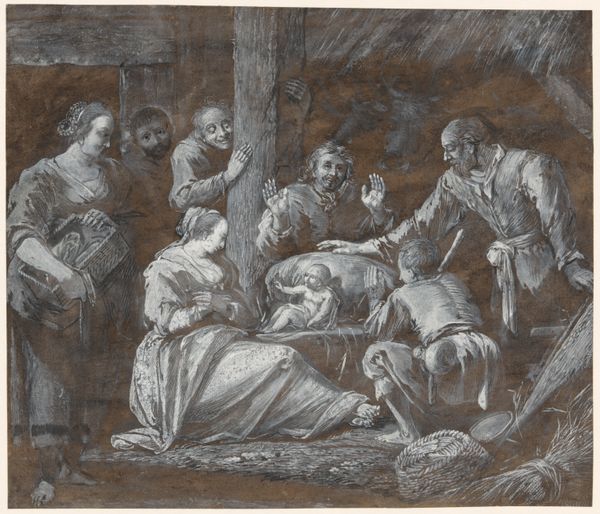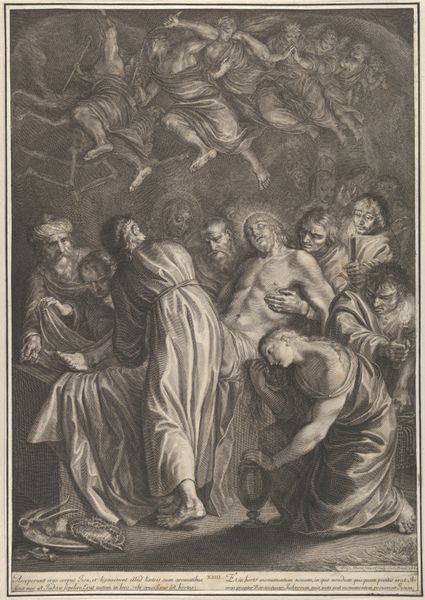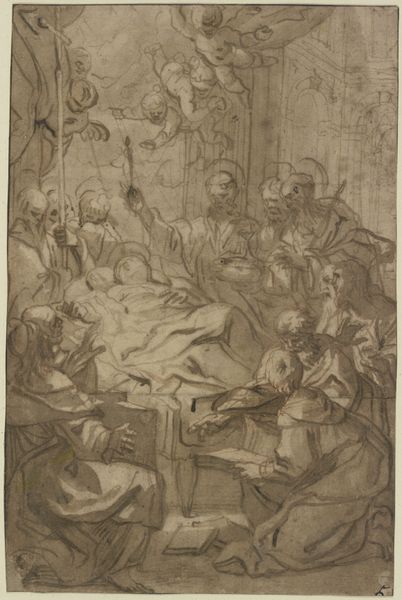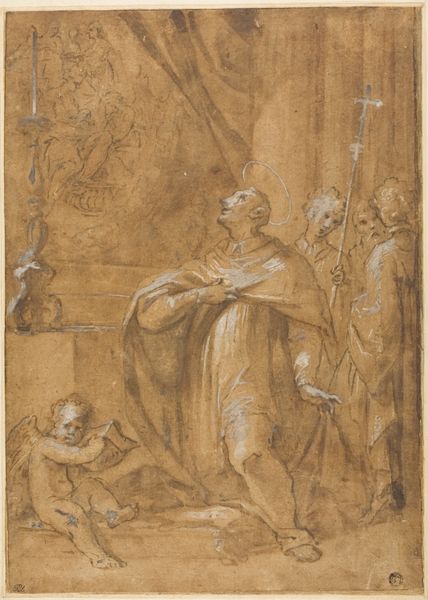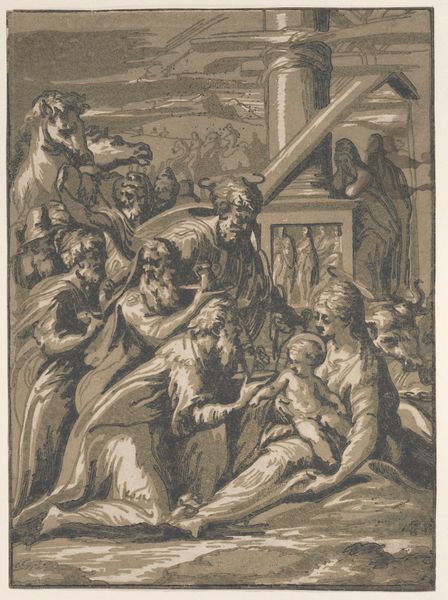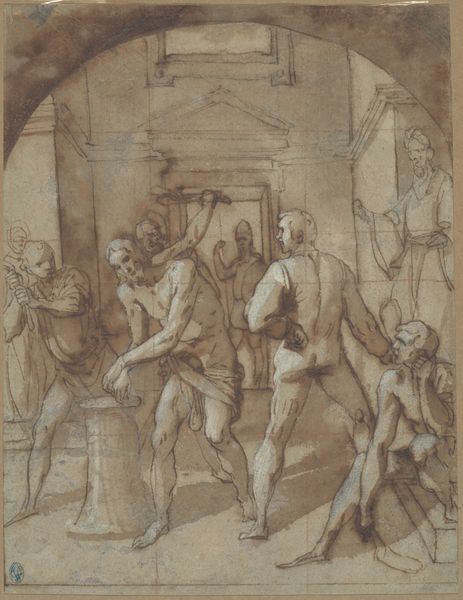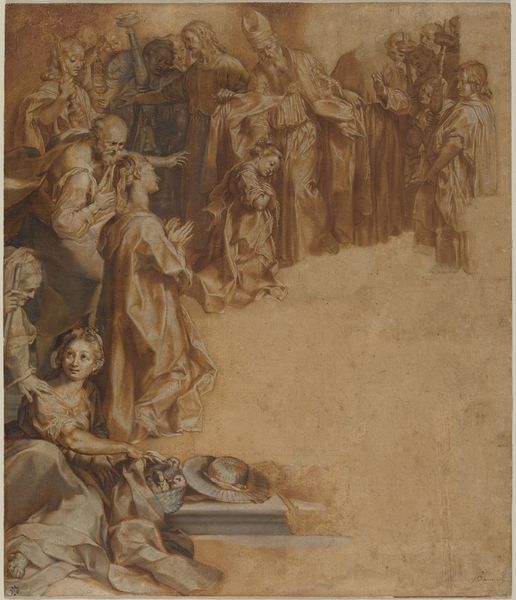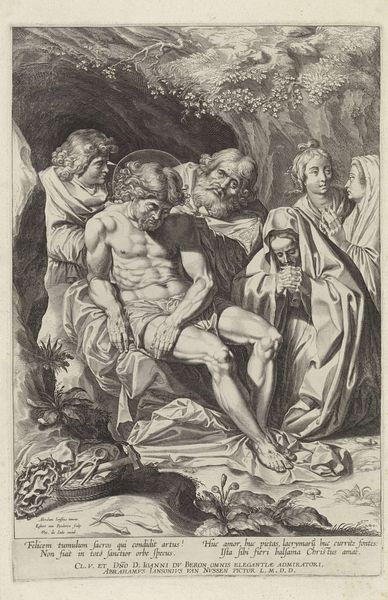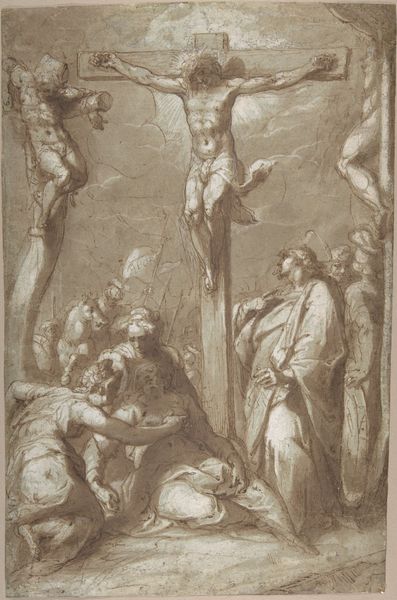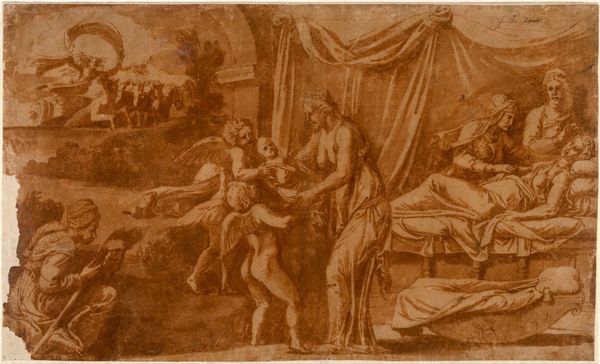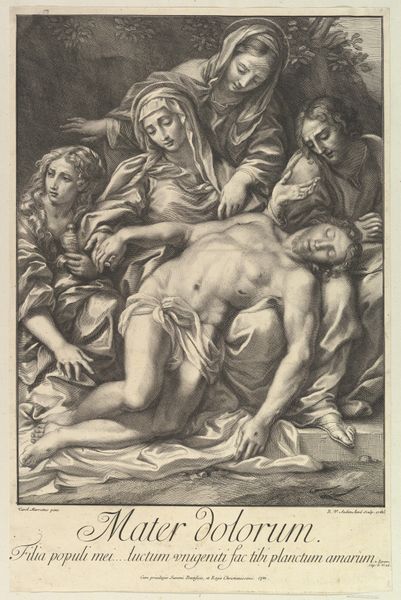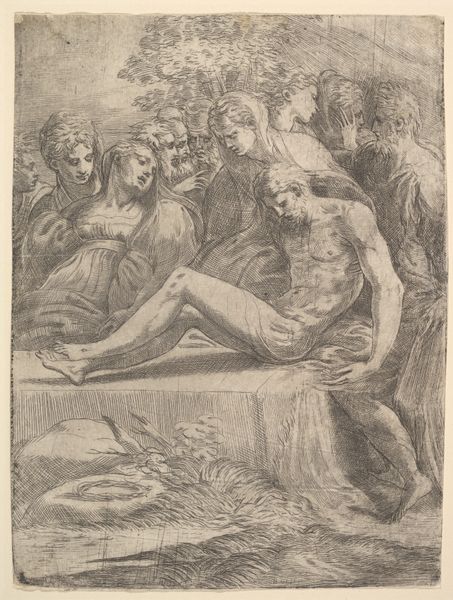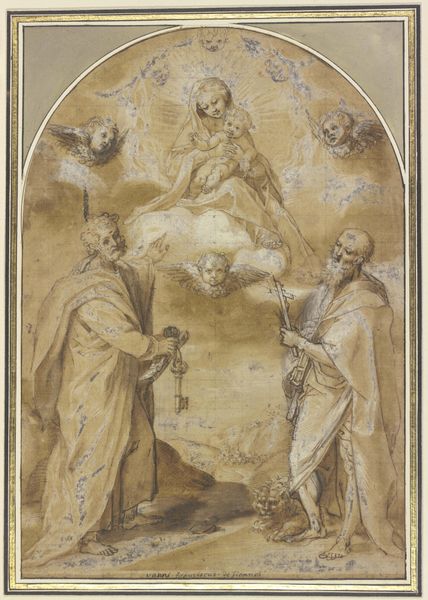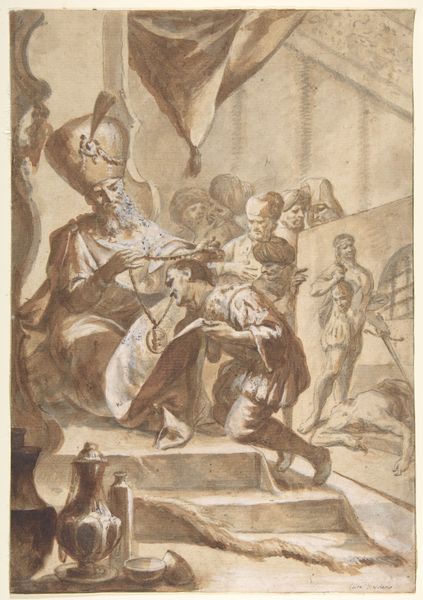
oil-paint
#
portrait
#
baroque
#
oil-paint
#
landscape
#
figuration
#
chiaroscuro
#
history-painting
#
academic-art
#
italian-renaissance
#
realism
#
christ
Dimensions: 17 1/4 x 13 3/4 in. (43.8 x 34.9 cm)
Copyright: Public Domain
Editor: Here we have Annibale Carracci's "The Burial of Christ," painted in 1595. It’s oil on canvas, and currently at the Metropolitan Museum. The overall impression is so somber, really dominated by that deep, dark background which makes the figures seem almost fragile in comparison. How do you interpret this work, given the context of its time? Curator: It’s crucial to see this not just as a religious scene, but as a statement. Carracci, working in the late 16th century, operates in a time rife with religious and social upheaval, against the backdrop of the Counter-Reformation. Think about it: Who gets to control the narrative around Christ’s suffering and sacrifice? The intense chiaroscuro isn’t just a visual effect; it's highlighting power dynamics, literally casting shadows on the marginalized figures present at Christ’s burial, don’t you think? Editor: That's fascinating! I hadn’t considered the intentionality behind the light and shadow beyond the aesthetic. So, is Carracci making a subtle commentary on the Church’s authority, then? Curator: It's an invitation to consider the power structures inherent in representing such a monumental moment. Who are these figures? What is their relationship to power, and how does Carracci visually articulate their exclusion or inclusion in this event? We are not just seeing Christ's burial, we're being asked to question who benefits from this narrative, and how their identities are framed within it. It brings attention to the realness of grief and to the communal aspects, contrasting with what might have been portrayed, which tends to be grandiosity over accessibility. Editor: I see, so the focus shifts from glorification to something more…human and communal? It adds a whole new layer of meaning. Curator: Precisely. And through that shift, it prompts us to ask: Whose stories are centered, and whose are left in the shadows? Editor: This makes me appreciate how a single painting can contain so much social commentary! Curator: It's a testament to art's power, always prompting conversation, not just admiration.
Comments
No comments
Be the first to comment and join the conversation on the ultimate creative platform.
